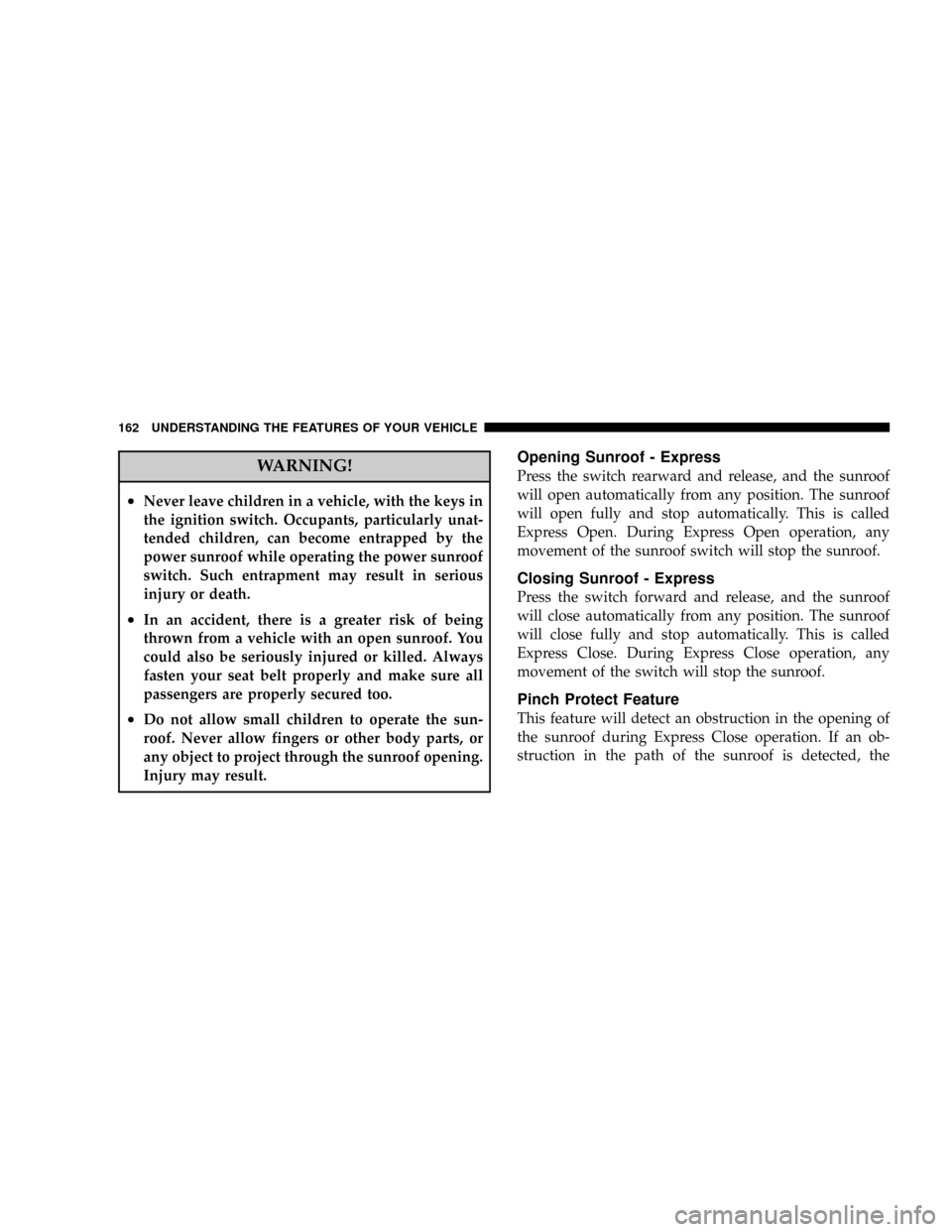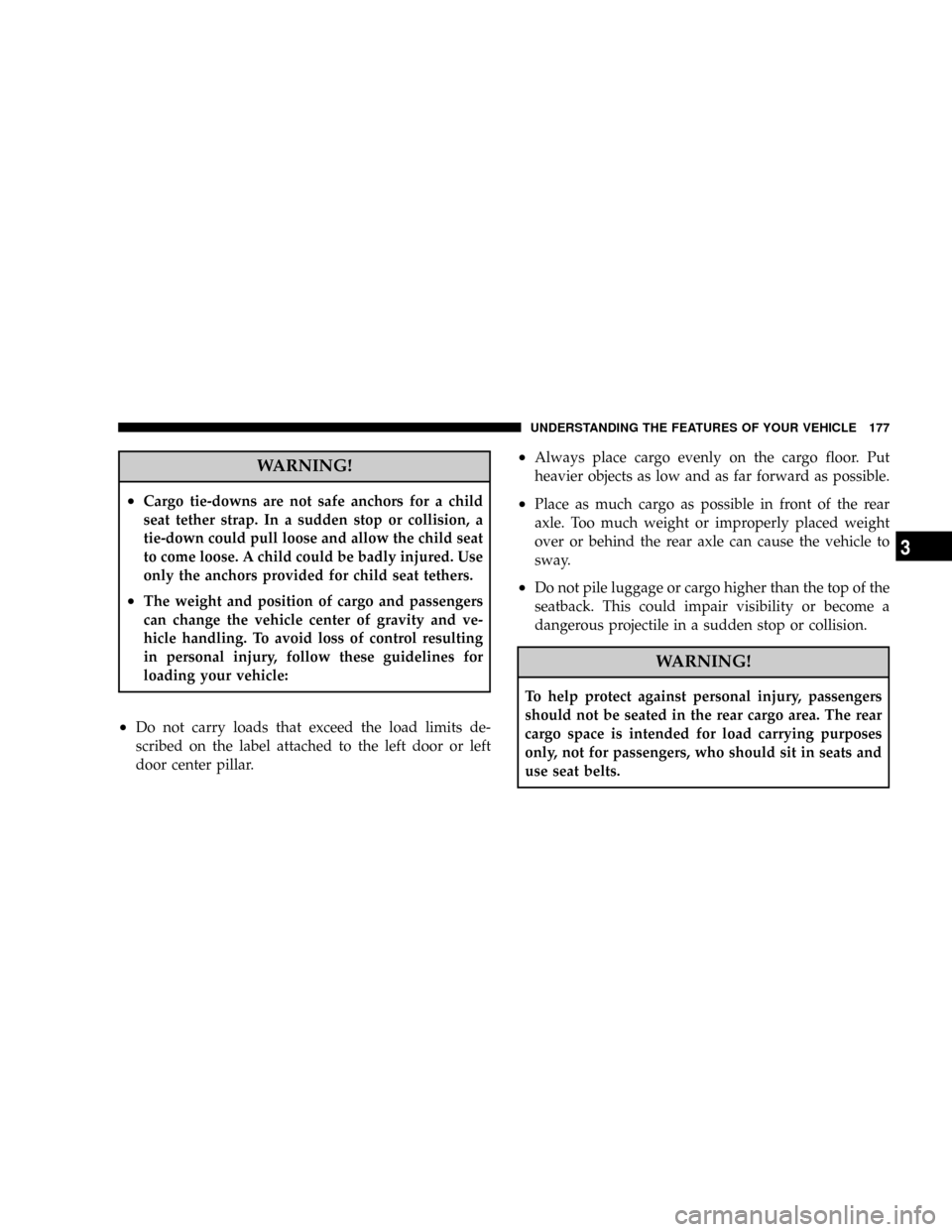Page 75 of 493
The rear seat lower anchorages are round bars, located at
the rear of the seat cushion where it meets the seat back,
and are just visible when you lean into the rear seat to
install the child restraint. You will easily feel them if you
run your finger along the intersection of the seatback and
seat cushion surfaces.In addition, there are tether strap anchorages behind each
rear seating position located on the back of the seat.
Many, but not all restraint systems will be equipped with
separate straps on each side, with each having a hook or
connector for attachment to the lower anchorage and a
Latch Anchorages
Tether Strap Mounting
THINGS TO KNOW BEFORE STARTING YOUR VEHICLE 75
2
Page 76 of 493

means of adjusting the tension in the strap. Forward-
facing toddler restraints and some rear-facing infant
restraints will also be equipped with a tether strap, a
hook for attachment to the tether strap anchorage and a
means of adjusting the tension of the strap.
You will first loosen the adjusters on the lower straps and
on the tether strap so that you can more easily attach the
hooks or connectors to the vehicle anchorages. Next,
attach the lower hooks or connectors over the top of the
anchorage bars, pushing aside the seat cover material.
Then, locate the tether anchorage directly behind the seat
where you are placing the child restraint and attach the
tether strap to the anchorage, being careful to route the
tether strap to provide the most direct path between the
anchor and the child restraint. Finally, tighten all three
straps as you push the child restraint rearward and
downward into the seat, removing slack in the straps
according to the child restraint manufacturer's instruc-
tions.WARNING!
Improper installation of a child restraint to the
LATCH anchorages can lead to failure of an infant or
child restraint. The child could be badly injured or
killed. Follow the manufacturer's directions exactly
when installing an infant or child restraint.
Installing Child Restraints Using the Vehicle Seat
Belt
The passenger seat belts are equipped with either cinch-
ing latch plates or automatic locking retractors, which are
designed to keep the lap portion tight around the child
restraint so that it is not necessary to use a locking clip. If
the seat belt has a cinching latch plate, pulling up on the
shoulder portion of the lap/shoulder belt will tighten the
76 THINGS TO KNOW BEFORE STARTING YOUR VEHICLE
Page 77 of 493

belt. However, any seat belt system may loosen with
time, so check the belt occasionally, and pull it tight if
necessary.
If the seat belt has an automatic locking retractor, pull the
belt from the retractor until there is enough to allow you
to pass through the child restraint and slide the latch
plate into the buckle. Then, pull the belt until it is all
extracted from the retractor. Allow the belt to return to
the retractor, pulling on the excess webbing to tighten the
lap portion about the child restraint. Refer to ªAutomatic
Locking Modeº earlier in this section.In the rear seat, you may have trouble tightening the
lap/shoulder belt on the child restraint because the
buckle or latch plate is too close to the belt path opening
on the restraint. Disconnect the latch plate from the
buckle and twist the short buckle-end belt several times
to shorten it. Insert the latch plate into the buckle with the
release button facing out.
If the belt still can't be tightened, or if by pulling and
pushing on the restraint loosens the belt, you may need
to do something more. Disconnect the latch plate from
the buckle, turn the buckle around, and insert the latch
plate into the buckle again. If you still can't make the
child restraint secure, try a different seating position.
THINGS TO KNOW BEFORE STARTING YOUR VEHICLE 77
2
Page 78 of 493
To attach a child restraint tether strap:
Route the tether strap over the seat back and attach the
hook to the tether anchor located on the back of the seat.
For the outboard seating positions, route the tether
underneath the headrest and attach the hook to the tether
anchor located on the back of the seat.WARNING!
An incorrectly anchored tether strap could lead to
increased head motion and possible injury to the
child. Use only the anchor positions directly behind
the child seat to secure a child restraint top tether
strap.
Transporting Pets
Airbags deploying in the front seat could harm your pet.
An unrestrained pet will be thrown about and possibly
injured, or injure a passenger during panic braking or in
a collision.
Pets should be restrained in the rear seat in pet harnesses
or pet carriers that are secured by seat belts.
Tether Strap Mounting
78 THINGS TO KNOW BEFORE STARTING YOUR VEHICLE
Page 126 of 493
4. If desired, push down on the seatback to lock it in the
folded position.
To Raise the Rear Seat
NOTE:If interference from the cargo area prevents the
seatback from fully locking, you will have difficulty
returning the seat to its proper position.
1. If locked in the folded position, pull the release strap
(toward the front of the vehicle).
2. Raise the seatback and lock it into place.
WARNING!
Be certain that the seatback is securely locked into
position. If the seatback in not securely locked into
position the seat will not provide the proper stability
for child seats and/or passengers. An improperly
latched seat could cause serious injury.
Recliner Adjustment
The rear seatback also reclines for additional passenger
comfort. Pull the release strap while sitting in the rear
seat to recline the seatback.
126 UNDERSTANDING THE FEATURES OF YOUR VEHICLE
Page 162 of 493

WARNING!
²Never leave children in a vehicle, with the keys in
the ignition switch. Occupants, particularly unat-
tended children, can become entrapped by the
power sunroof while operating the power sunroof
switch. Such entrapment may result in serious
injury or death.
²In an accident, there is a greater risk of being
thrown from a vehicle with an open sunroof. You
could also be seriously injured or killed. Always
fasten your seat belt properly and make sure all
passengers are properly secured too.
²Do not allow small children to operate the sun-
roof. Never allow fingers or other body parts, or
any object to project through the sunroof opening.
Injury may result.
Opening Sunroof - Express
Press the switch rearward and release, and the sunroof
will open automatically from any position. The sunroof
will open fully and stop automatically. This is called
Express Open. During Express Open operation, any
movement of the sunroof switch will stop the sunroof.
Closing Sunroof - Express
Press the switch forward and release, and the sunroof
will close automatically from any position. The sunroof
will close fully and stop automatically. This is called
Express Close. During Express Close operation, any
movement of the switch will stop the sunroof.
Pinch Protect Feature
This feature will detect an obstruction in the opening of
the sunroof during Express Close operation. If an ob-
struction in the path of the sunroof is detected, the
162 UNDERSTANDING THE FEATURES OF YOUR VEHICLE
Page 165 of 493

CAUTION!
²Never attempt to open or close the Sky Slidertwhen
it is frozen. Wait until the Sky Slidertis thawed
before operating.
²Opening the Sky Slidertwhen damp, wet, or dirty
can cause stains, mildew, and damage to the soft-top
material and the inside of your vehicle. Make sure
the Sky Slidertis dry before opening.
²Always close the Sky Slidertwhen leaving your
vehicle so as not to leave the interior exposed to
potentially damaging outdoor conditions.
²Do not leave the Sky Slidertopen for several weeks
at a time. Close it occasionally to prevent discolora-
tion in the folds of the fabric and to allow the creases
to smooth out. This is especially important if the Sky
Slidertwas opened when not completely dry.
Failure to follow these cautions can cause damage to the
Sky Slider,tvehicle contents, and the vehicle interior.
WARNING!
²In an accident, there is a greater risk of being thrown from a
vehicle with the Sky Slidertopen. Always fasten your seat belt
properly and make sure all passengers are properly secured too.
²Before operating the Sky Slider,tmake sure that no moving parts
of the Sky Slidertcan injure a person or animal.
²Never place any extremities (hands, feet, etc.) near the Sky Slidert
components or the roof area while operating the Sky Slider.t
²If potential danger exists while opening or closing the Sky Slidert
in Automatic Mode, press and release the switch immediately to
interrupt the operation.
²If potential danger exists while opening or closing the Sky Slidert
in Operator Mode, release the switch immediately to interrupt the
operation.
²Do not allow small children to operate the Sky Slider.t
²Never leave children in a vehicle, with the key in the ignition
switch. Occupants, particularly unattended children, can become
entrapped by the Sky Slidertwhile operating the Power Top
switch. Such entrapment may result in serious injury or death.
Failure to follow these warnings can result in injuries that are serious
or fatal to you, your passengers, and others around you.
UNDERSTANDING THE FEATURES OF YOUR VEHICLE 165
3
Page 177 of 493

WARNING!
²Cargo tie-downs are not safe anchors for a child
seat tether strap. In a sudden stop or collision, a
tie-down could pull loose and allow the child seat
to come loose. A child could be badly injured. Use
only the anchors provided for child seat tethers.
²The weight and position of cargo and passengers
can change the vehicle center of gravity and ve-
hicle handling. To avoid loss of control resulting
in personal injury, follow these guidelines for
loading your vehicle:
²Do not carry loads that exceed the load limits de-
scribed on the label attached to the left door or left
door center pillar.
²Always place cargo evenly on the cargo floor. Put
heavier objects as low and as far forward as possible.
²Place as much cargo as possible in front of the rear
axle. Too much weight or improperly placed weight
over or behind the rear axle can cause the vehicle to
sway.
²Do not pile luggage or cargo higher than the top of the
seatback. This could impair visibility or become a
dangerous projectile in a sudden stop or collision.
WARNING!
To help protect against personal injury, passengers
should not be seated in the rear cargo area. The rear
cargo space is intended for load carrying purposes
only, not for passengers, who should sit in seats and
use seat belts.
UNDERSTANDING THE FEATURES OF YOUR VEHICLE 177
3